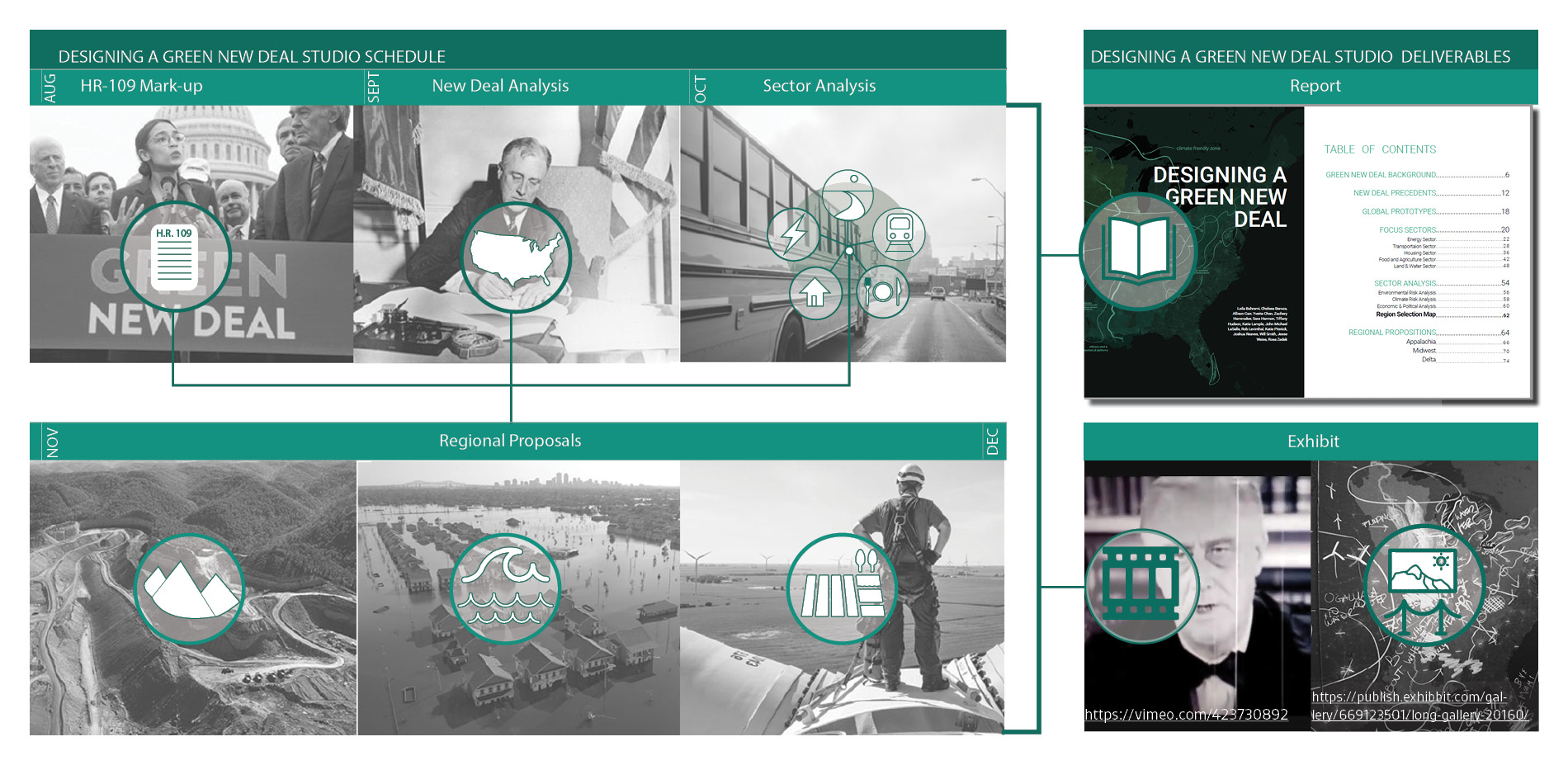
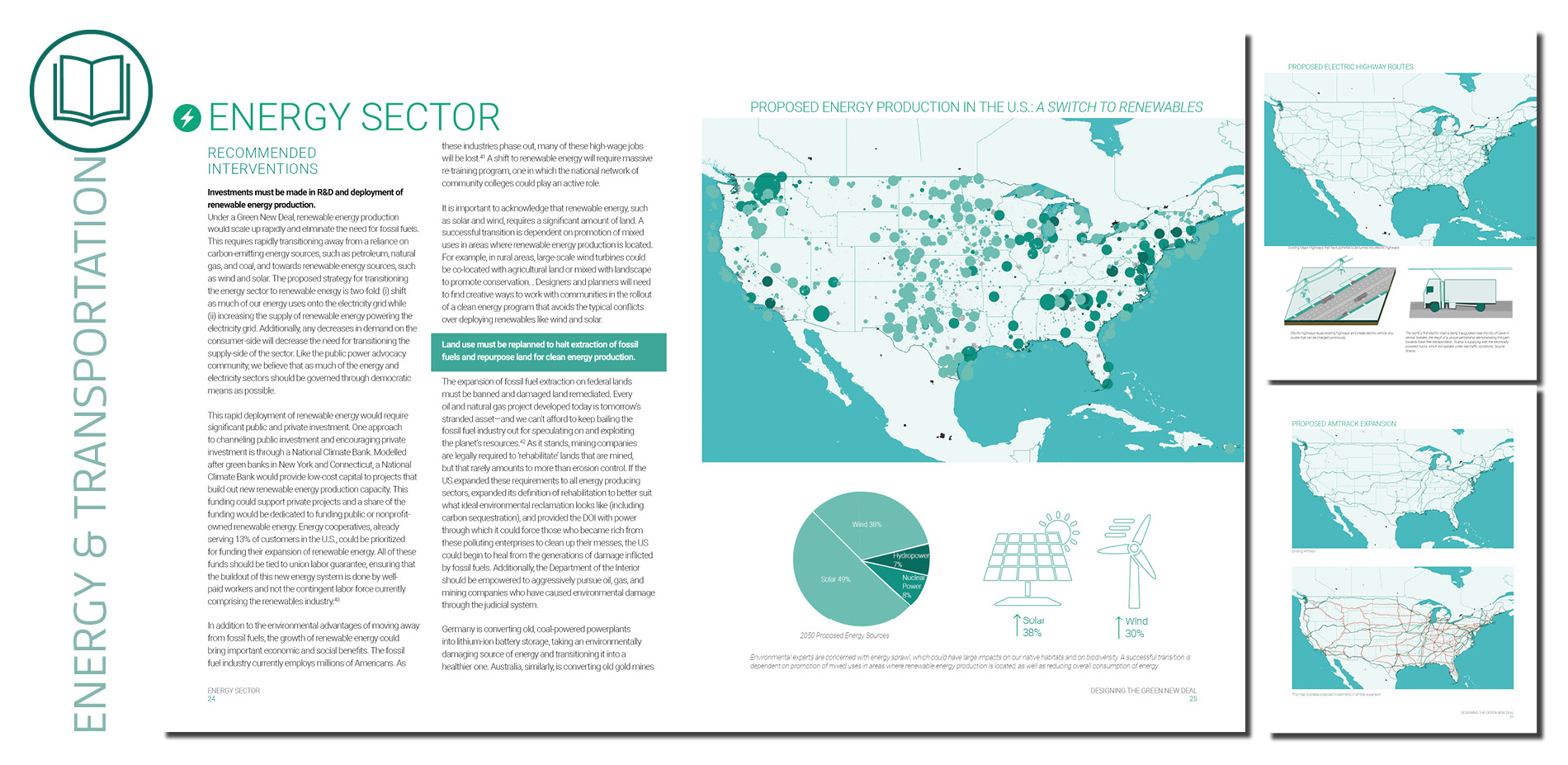
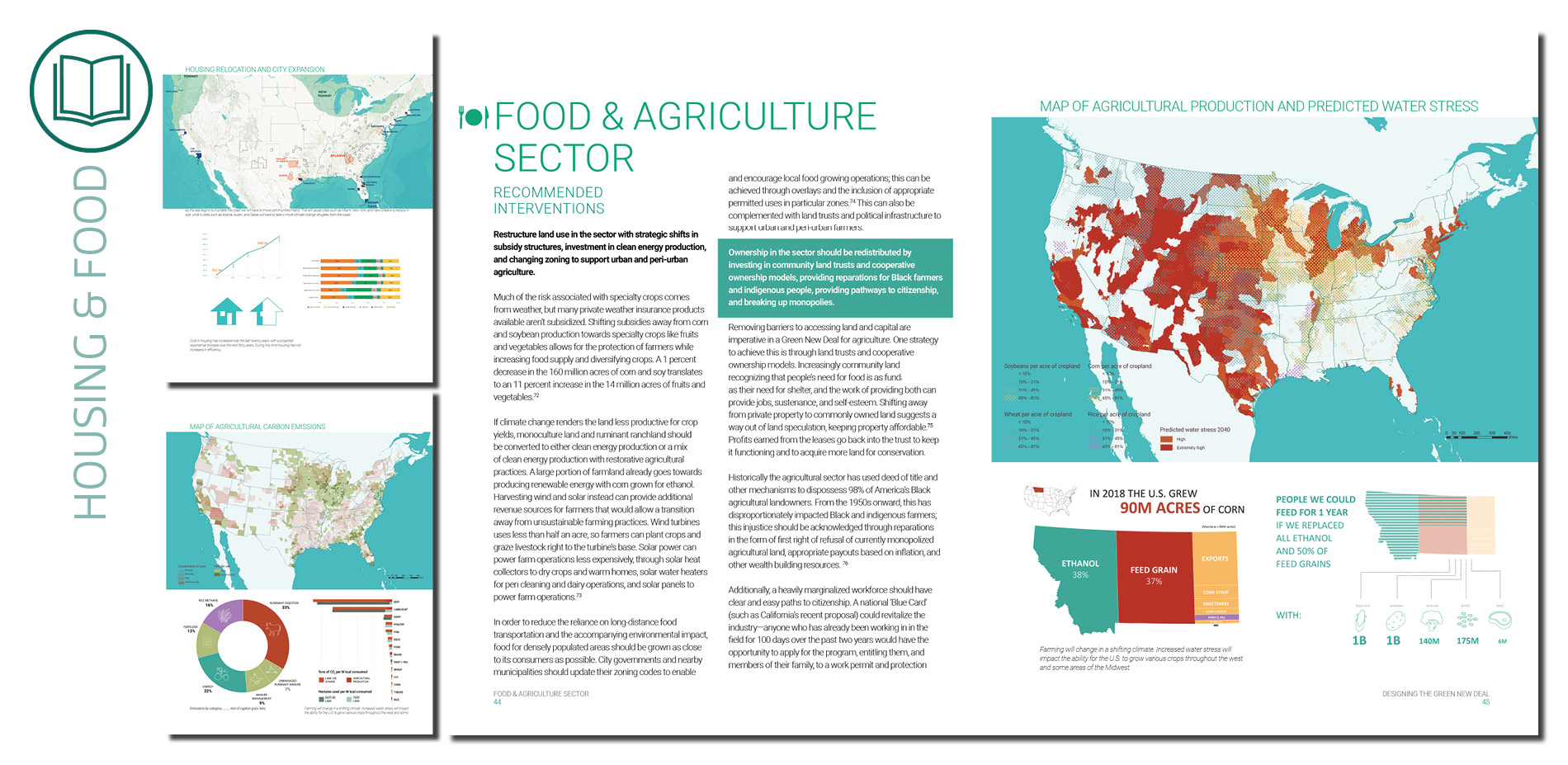
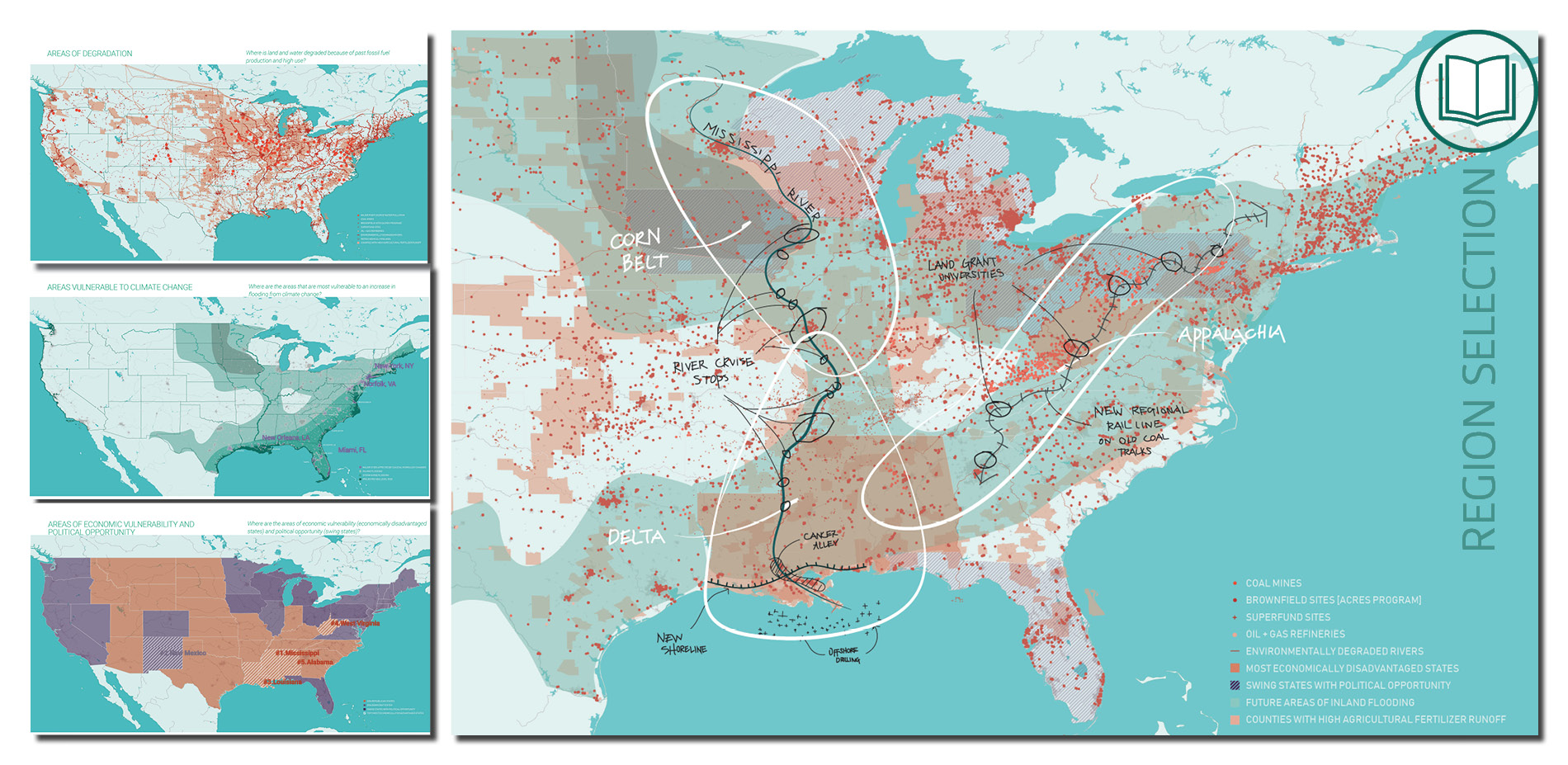
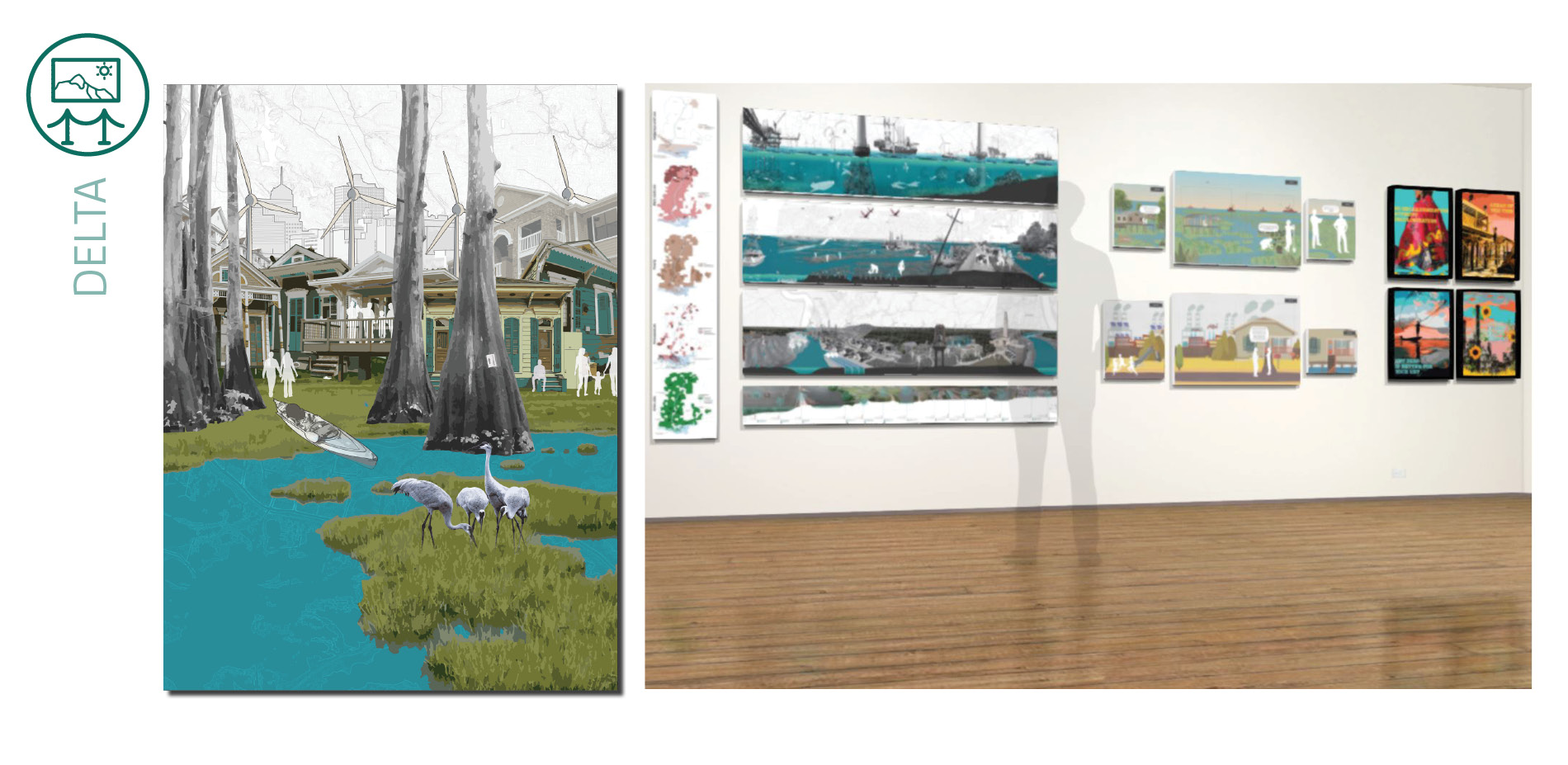
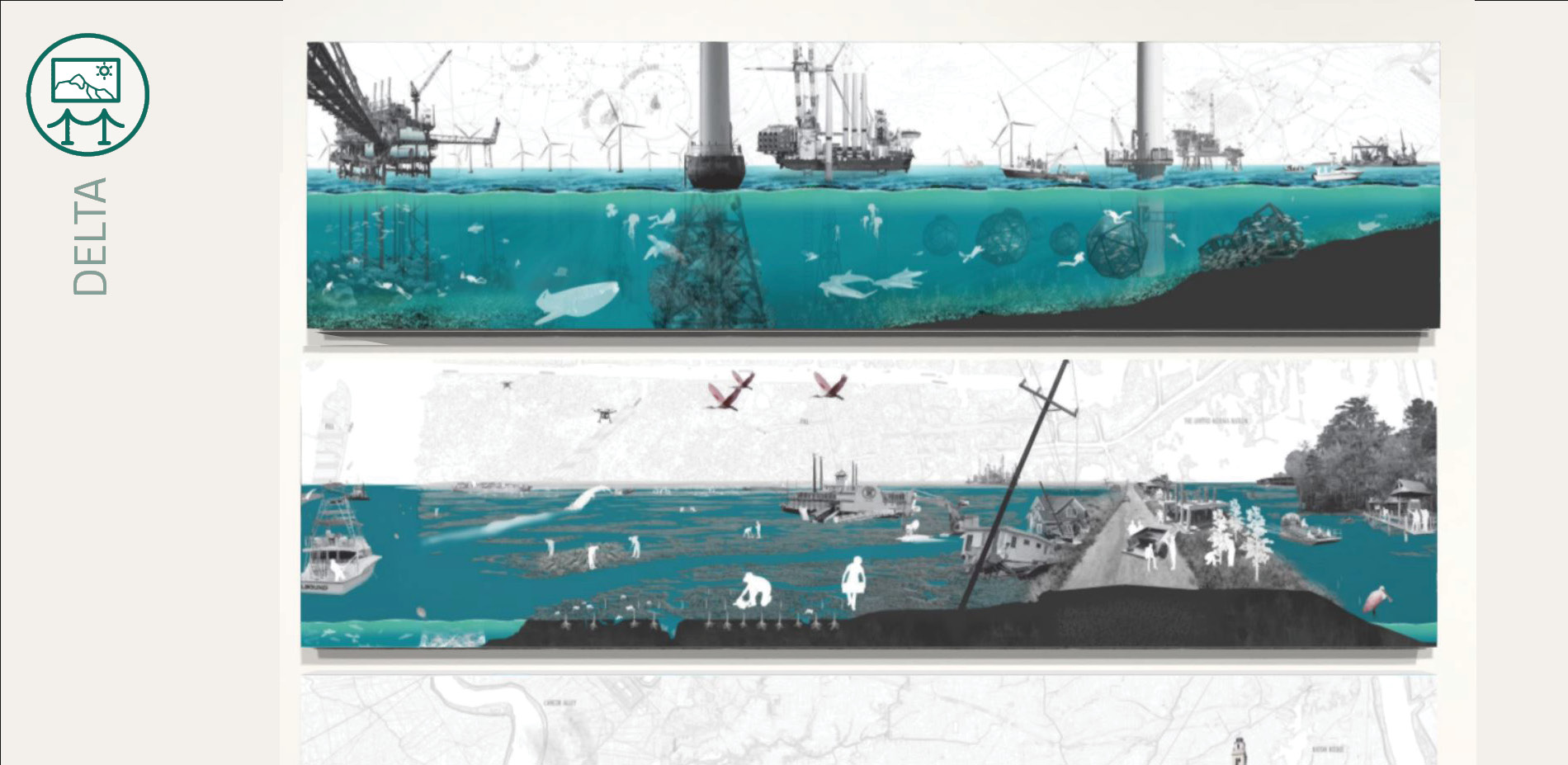
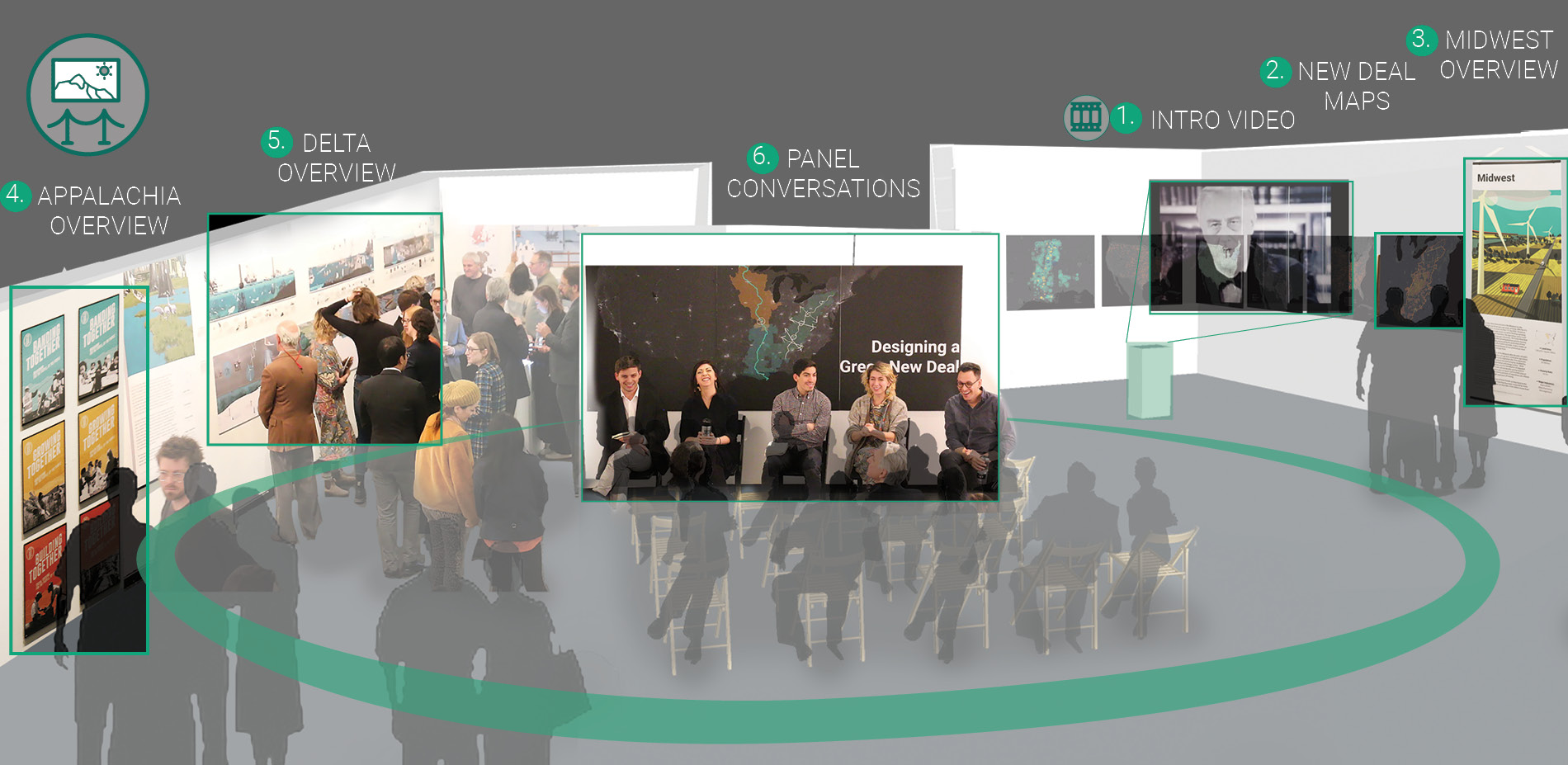
Project Statement
According to IPCC, we have less than 12 years to prevent exceeding 1.5°C of global warming, risking irreversible impacts. In response, House Resolution 109 (HR-109), the Green New Deal, was introduced in 2019 aiming for carbon neutrality by 2050 through sustainable job creation. Although it promises significant investment in infrastructure like housing, transit, and parks, details on practical implementation remain sparse. This studio explores how designers can help translate the Green New Deal into actionable, real-world change.
Project Narrative
In the "Designing a Green New Deal" studio, we tackled two central questions for the Green New Deal (GND): (1) which U.S. regions should be prioritized to meet GND goals on carbon reduction, justice, and jobs, and (2) where initial investments should be directed. The studio’s efforts led to a public exhibition and policy brief aimed at involving landscape architects in climate politics and sparking public engagement with the GND.
The project began with an analysis of the New Deal’s environmental and infrastructural legacy, highlighting agencies like the Tennessee Valley Authority and Civilian Conservation Corps. Inspired by the New Deal’s focus on resistant regions, interdisciplinary teams researched five GND sectors—energy, transportation, housing, food, and land/water—leading to a consensus on three priority regions: Appalachia, the Mississippi Delta, and the Midwest.
Mississippi Delta Region
Each regional team developed proposals tailored to local needs. In the Mississippi Delta, proposals focus on decommissioning petrochemical sites and restoring wetlands. Restored coastal marshes capture atmospheric carbon, while decommissioned oil rigs are repurposed with wind turbines to support coral reef growth. These remediation efforts foster high-wage jobs and build ecological buffers against future storms.
Public Exhibition
To engage the public with the transformations resulted from Green New Deal, a public exhibition of work aimed at communicating three core messages: (1) the New Deal’s transformative impact on the environment, (2) the importance of prioritizing Appalachia, the Delta, and the Midwest, and (3) the GND’s potential for both large-scale interventions, like a regional rail line, and community-focused projects, like regenerative farming.